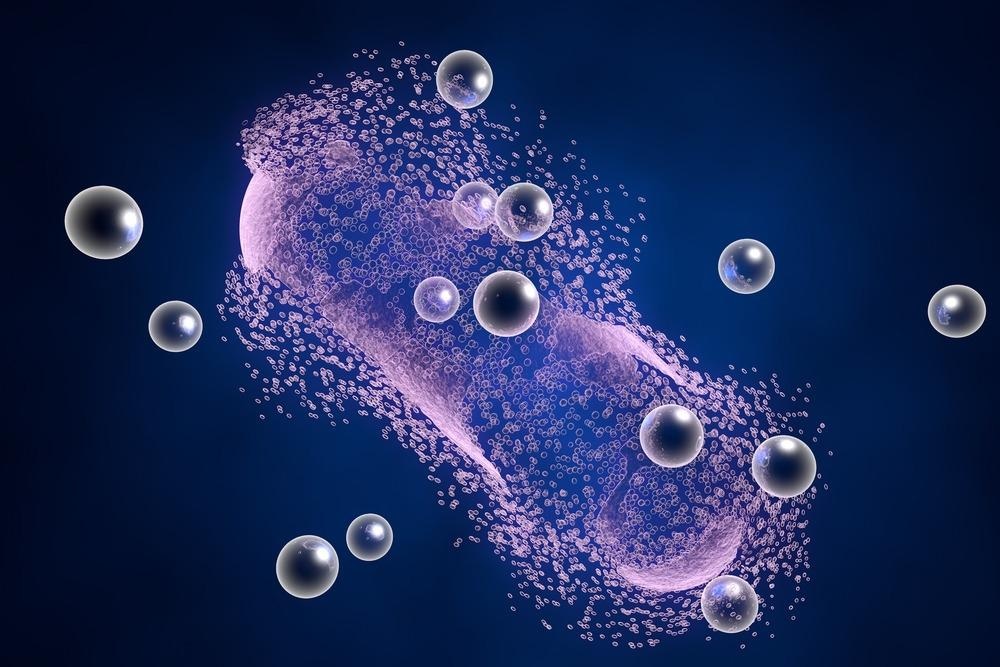Silver-based nanoparticle presence in everyday items has surged over the past decade. Silver is an efficient antibacterial agent but can harm the environment. A study published in the journal iScience aims to discern the relationship between microbial activity and silver, providing a means for limiting the unintended environmental impact of silver-based nanoparticles

Study: When Function is Biological: Discerning How Silver Nanoparticle Structure Dictates Antimicrobial Activity. Image Credit: Kateryna Kon/Shutterstock.com
Silver – An Effective Antibacterial Agent
Silver's antimicrobial qualities have been known for centuries. Silver containers were revered for their capacity to keep dairy items from spoiling, and the Greeks employed silver creams to treat wound infections. Several commercial goods now use silver, although in a much more effective form.
Silver-based nanoparticles used in fabrics are advertised for their excellent resistance to odors. Medical supplies are readily layered with silver-based nanoparticles to restrict the growth of bacteria. Similarly, silver-based nanoparticles used in paints, countertops, and toys promise long-lasting antimicrobial characteristics.
Effects of Silver Nanoparticles on the Ecosystem
The generation of silver-based nanoparticles currently exceeds 600 metric tons, with most of it contaminating the environment through wastewater and solid waste.
The uncontrolled exposure to silver-based nanoparticles is a rising issue since these nanoparticles may harm naturally existing bacteria, marine environments, and even human health. Therefore, the modification of silver-based nanoparticle toxicity may contribute to enhanced antimicrobial technology and may limit undesirable environmental consequences after disposal.
Controlling silver-based nanoparticle toxicity necessitates controlling nanoparticle dissolution. The duration of this dissolution process is defined by parameters such as pH, the amount of sulfide, dissolved oxygen, the quantity of natural organic matter, and ambient light.
Manipulating Silver's Toxicity
Silver ions are hazardous to bacteria as they may attach to various proteins, causing their activities to be disrupted. When these silver ions are discharged due to particle breakdown, they account for the majority of the antibacterial activity of silver nanoparticles. No harm is found when all of the oxygen is removed.
Antimicrobial action may be significantly boosted if nanoparticle breakdown is encouraged by acidification. Attempting to manipulate the dissolution of silver-based nanoparticles by changing the aqueous-based solution, on the other hand, might be a daunting prospect for regulating the nanoparticle's complete existence.
Structure-Activity Relationship (SAR)
The next logical progression in the research of silver-based nanoparticles is to develop a structure-activity relationship (SAR). The optimal SAR would use the structural properties of a silver-based nanoparticle, such as the particle's dimensions, as input and forecast the dissolution of silver as well as antibacterial activity.
The nanoparticles themselves pose a problem in producing such data. The most common techniques for producing silver-based nanoparticles produce materials with uncontrolled surface characteristics, size, and shape—the accuracy of the activity-structure relationships is reduced.
Basis of the Research
The link between silver-based nanoparticle architecture, silver dissolution, and silver's antibacterial action was defined by the team. Several synthetic approaches were created or changed to create a massive collection of nanoparticles with individually adjusted surface chemistries, dimensions, and shapes.
The collection of nanoparticles allowed the team to untangle the effect of each variable on the dissolution, demonstrating the link between structural factors and dissolution performance unequivocally.
The team investigated the dynamics and equilibrium behavior of silver-based nanoparticle dissolution utilizing conventional techniques to obtain numerical data for structural characteristics comparison. The team also assessed the antimicrobial ability of similar samples.
Results of the Study
Utilizing a collection of silver-based nanoparticles customized to demonstrate a broad variety of surface chemistries, sizes, and shapes, this study evaluated how silver-based nanoparticle properties affect antibacterial effectiveness and their environmental effect.
The team highlighted that when there is a greater surface area of silver accessible, there is more dissolved silver. Similarly, the team ascertained that tiny particles dissolve to a higher degree than bigger particles for a similar mass fraction of silver, as expected by their proportionately greater surface areas.
For almost all substances, the dissolution rate was proportionate to the amount of dissolution; the nanoparticles that dissolved quicker also dissolved to a greater degree.
The team concluded that these discoveries offer new insight into silver's chemistry at the nanoscale, and help to make room for the effective and safe usage of silver-based nanoparticles.
Reference
Zhang, Q., Hu, Y. et al. (2022). When Function is Biological: Discerning How Silver Nanoparticle Structure Dictates Antimicrobial Activity. iScience. Available at: https://www.sciencedirect.com/science/article/pii/S2589004222007465
Disclaimer: The views expressed here are those of the author expressed in their private capacity and do not necessarily represent the views of AZoM.com Limited T/A AZoNetwork the owner and operator of this website. This disclaimer forms part of the Terms and conditions of use of this website.